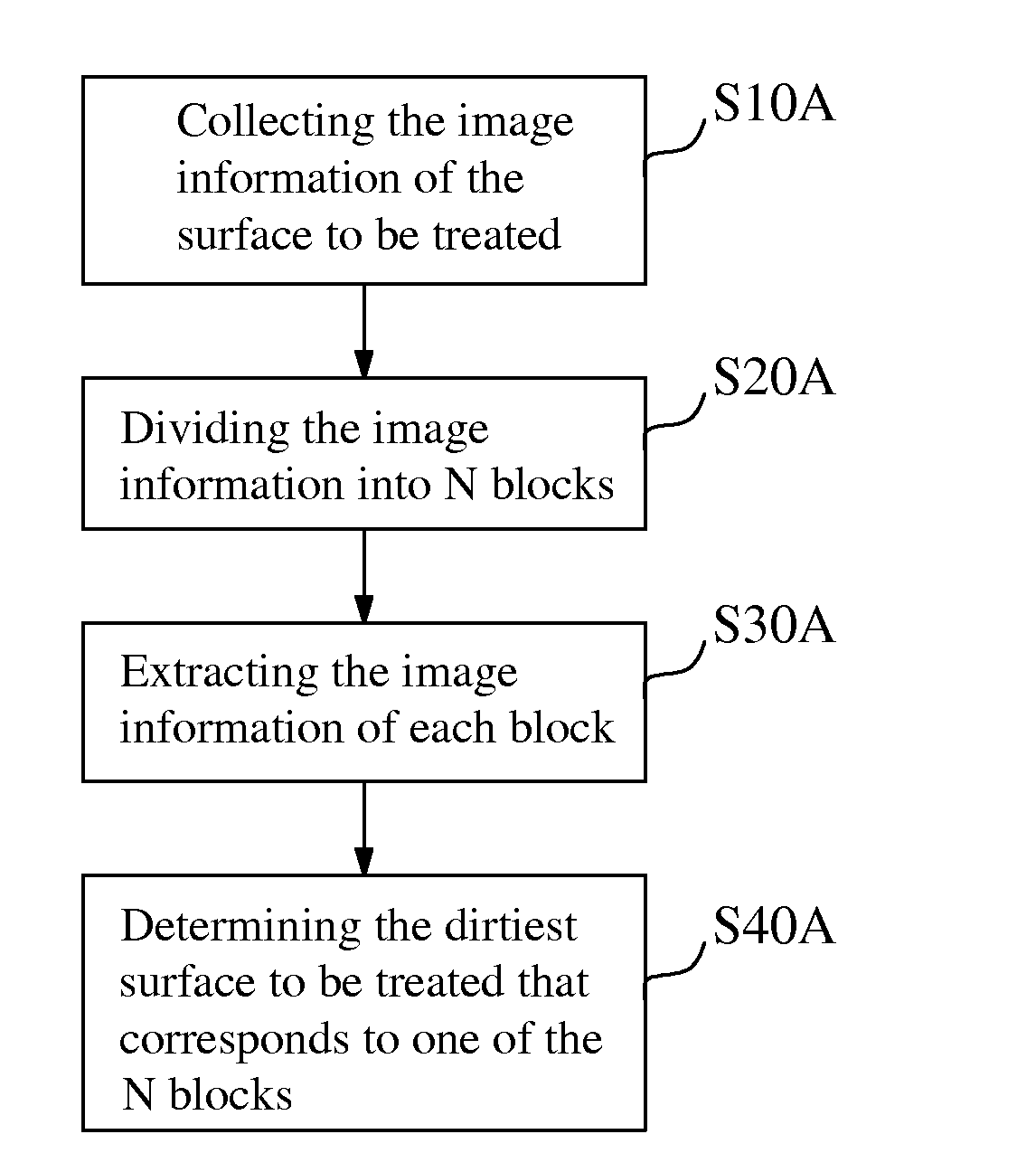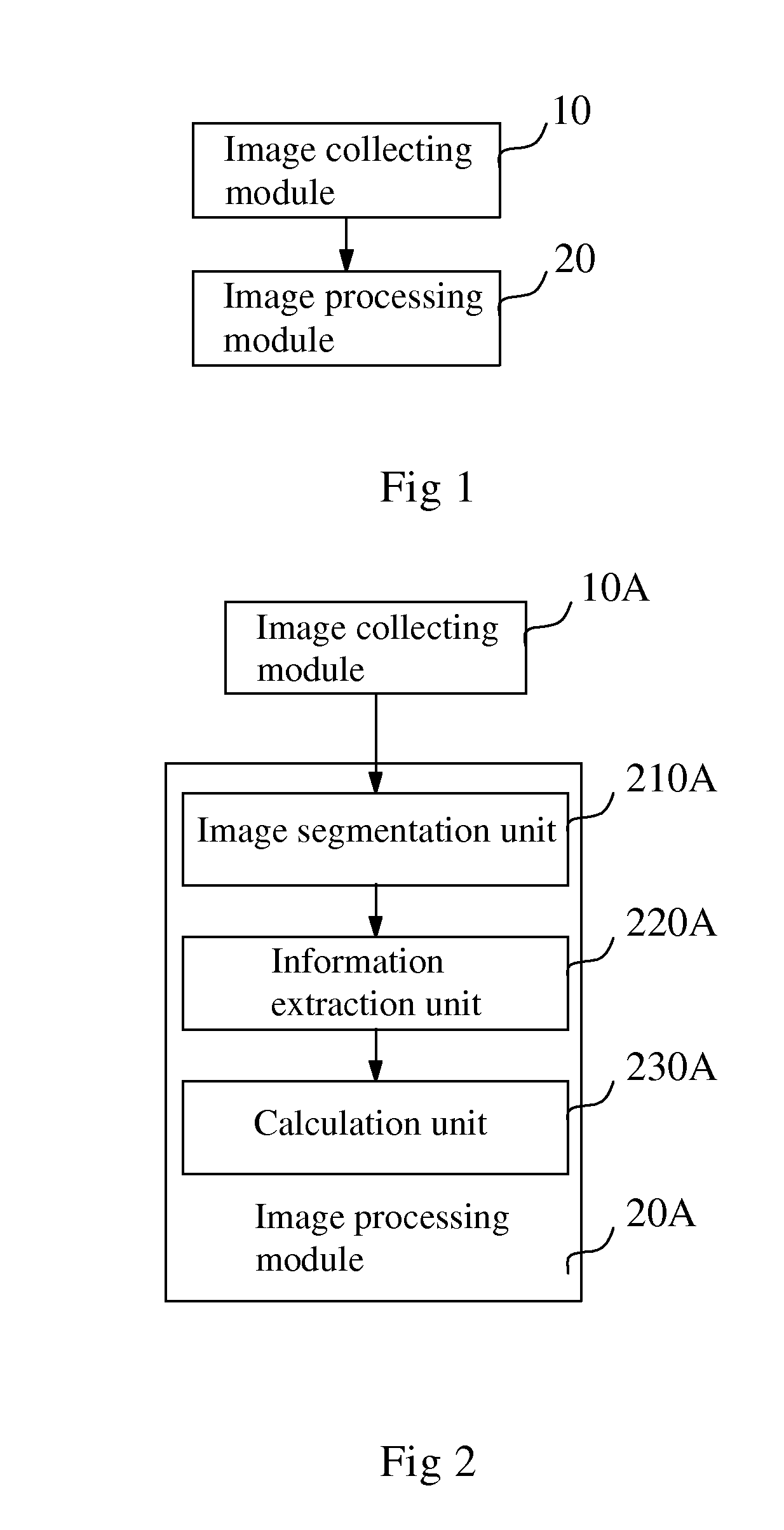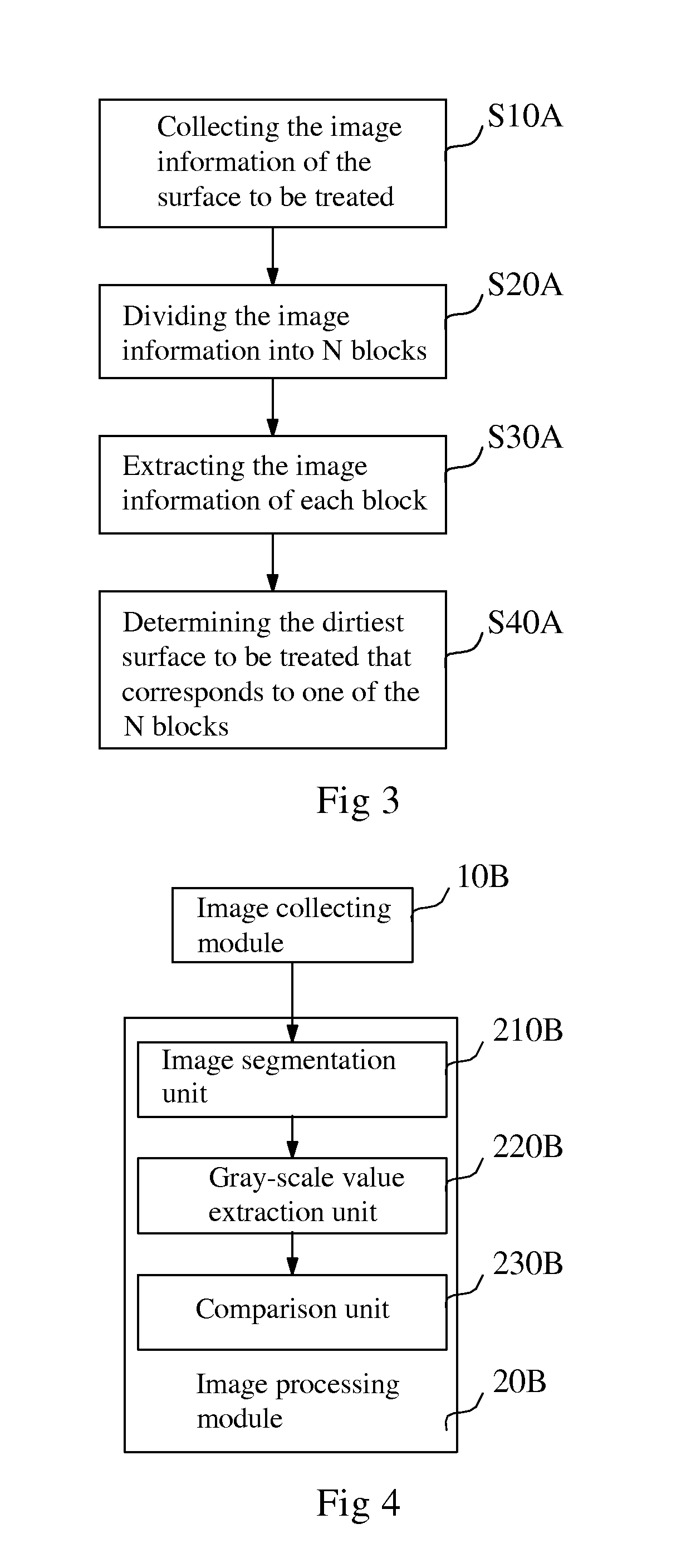Cleaning robot, dirt recognition device thereof and cleaning method of robot
a robot and dirt recognition technology, applied in the field of intelligent devices, can solve the problems of long cleaning time of the surface, low efficiency and waste of electric energy, and the inability to achieve the ultimate goal of liberating people from labor work, so as to save working time and improve the cleaning efficiency of the cleaning robot
- Summary
- Abstract
- Description
- Claims
- Application Information
AI Technical Summary
Benefits of technology
Problems solved by technology
Method used
Image
Examples
embodiment 1
[0078]the Recognition Device for Realizing Active Recognition to Dirt
[0079]As shown in FIG. 2, a recognition device for realizing active recognition to dirt is provided in the embodiment 1, comprising an image collecting module 10A and an image processing module 20A, wherein the image processing module 20A comprises an image segmentation unit 210A, an information extraction unit 220A and a calculation unit 230A. FIG. 3 is the working flow diagram of the recognition device.
[0080]As shown in FIG. 2 in combination with FIG. 3, after the image collecting module 10A is used for collecting the image information of the surface to be treated (Step S10A), the image segmentation unit 210A in the image processing module 20A may divide the collected image information of the surface to be treated into N blocks (where N>1) (Step S20A), the information extraction unit 220A may extract the image information of each block (step S30A) and send such image information to the calculation module 230A, an...
embodiment 2
[0082]the Recognition Device for Realizing the Active Recognition to Dirt
[0083]As shown in FIG. 4, a recognition device for realizing active recognition to dirt is provided in the embodiment 2. FIG. 5 is the working flow diagram of the recognition device which can make an active recognition to the dirt as shown in FIG. 4 of the present invention. As shown in FIG. 4 in combination with FIG. 5, the recognition device comprises an image collecting module 10B and an image processing module 20B, wherein the image processing module 20B comprises an image segmentation unit 210B, a gray-scale value extraction unit 220B and a comparison unit 230B.
[0084]The image collecting module 10B may collect the image information of the surface to be treated by the cleaning robot (Step S10B) and send such image information to the image segmentation unit 210B; the image segmentation unit 210B may divide the collected image information of the surface to be treated into N blocks according to the actual oper...
embodiment 3
[0087]the Recognition Device for Realizing the Active Recognition to Dirt
[0088]FIG. 6 is the principle schematic diagram of a recognition device for realizing active recognition to dirt is provided in the embodiment 3. As shown in FIG. 6, the recognition device comprises an image collecting module 10C and an image processing module 20C, wherein the image processing module 20C comprises an image segmentation unit 210C, a gray-scale value extraction unit 220C, a characteristic value extraction unit 231C and a comparison unit 230C; the characteristic value extraction unit 231C and the comparison unit 230C constitute a calculation unit.
[0089]This embodiment differs from the embodiment 1 in that: the gray-scale value is converted into the characteristic value in the characteristic value extraction unit 231C; the basis for determining the dirtiest surface to be treated is the magnitude of characteristic value, so that the surface that corresponds to the block with the maximum characterist...
PUM
 Login to View More
Login to View More Abstract
Description
Claims
Application Information
 Login to View More
Login to View More - R&D
- Intellectual Property
- Life Sciences
- Materials
- Tech Scout
- Unparalleled Data Quality
- Higher Quality Content
- 60% Fewer Hallucinations
Browse by: Latest US Patents, China's latest patents, Technical Efficacy Thesaurus, Application Domain, Technology Topic, Popular Technical Reports.
© 2025 PatSnap. All rights reserved.Legal|Privacy policy|Modern Slavery Act Transparency Statement|Sitemap|About US| Contact US: help@patsnap.com



